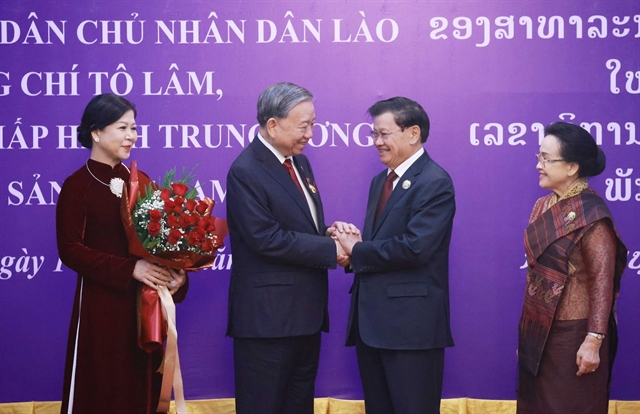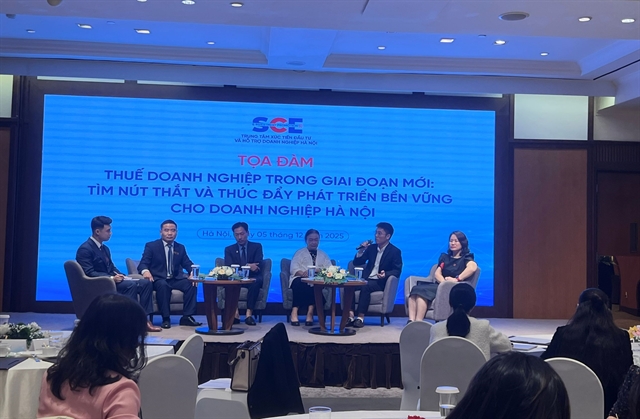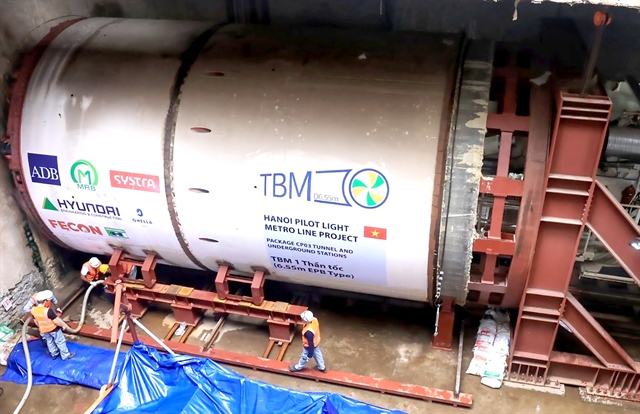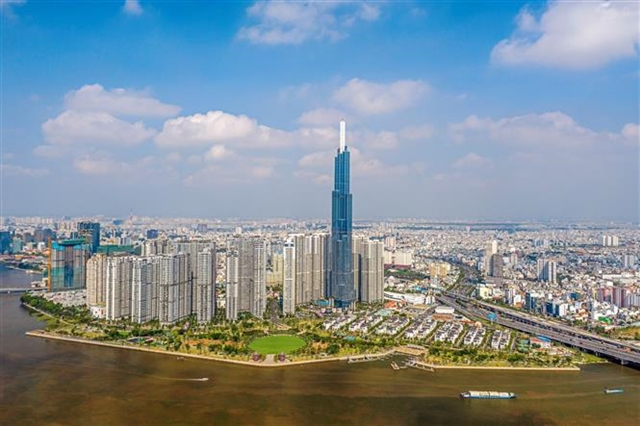 Opinion
Opinion

 |
| Workers for Hà Nội Urban Railway Management Board begin digging a tunnel using a tunnel boring machine for the underground section of the Nhổn - Hà Nội Station Metro Line. VNA/VNS Photo Tuấn Anh |
As of August 14, 2024, the elevated section of the Nhổn – Hà Nội Station metro line provided free rides to over 393,160 passengers during its first seven days of operation, with an average of 40,000-60,000 passengers per day. On Sunday, August 11, a record 100,000 passengers used the service.
This is a positive sign for the on-going construction of the underground section of the metro line. Nguyễn Bá Sơn, Deputy Director of the Hà Nội Urban Railway Management Board, spoke with vov.vn about the underground section's construction progress and the expected timeline for full operation along with the elevated section.
Could you tell us about the construction plans and the progress for the underground section from S9-S12 stations connecting Cầu Giấy to Hà Nội Station?
The underground section of Metro Line 3 is 4km long and has been delayed due to issues with site clearance. However, these issues have now been resolved and the contractor has handed over the entire site for construction.
Currently, the overall progress of the underground package is at 43 per cent. This includes four underground stations, with three stations having reached the base level (the level where trains will run), while S12 Station is still under construction at the transfer level.
An important milestone was reached on July 30 when tunnel boring began using the Tunnel Boring Machine (TBM). This is a crucial step that will determine the project's timeline. According to the plan, the two tunnels will be bored using TBM, with completion expected in 16 months or by November 2025.
After the tunnelling is complete, the two TBMs will be dismantled and removed from the site, making way for the installation of equipment. Following this, all testing procedures, including eight steps similar to the elevated section, will be carried out.
According to the plan, all construction and testing work is expected to be completed by 2027 as approved by the Prime Minister.
Can you explain the major challenge for the underground section from Cầu Giấy to Hà Nội Station?
Previously, the biggest challenge for the project was site clearance. Now that this issue has been resolved, the progress of the TBM tunnelling has become the critical factor.
We must ensure that tunnelling proceeds on schedule so that the site can be handed over to the equipment and systems contractors for installation. This is a key milestone that must be met, and we will continue to closely monitor progress.
During the tunnelling process, we identified some residential buildings that might be affected by the tunnel's path. We have reached agreements with the affected residents and signed agreements to provide compensation. The affected households will need to be temporarily relocated before the TBM reaches their area.
All these plans are under strict control, and we will keep residents informed in a timely manner, requiring their cooperation and coordination.
After putting the elevated section of the Nhổn – Hà Nội Station metro line into operation, could you share the lessons learned for implementing future urban railway projects?
Based on the experience of working on the Nhổn - Hà Nội Station metro line, a very complex and challenging project that has taken 14 years since its investment decision, I believe the lessons learned for accelerating future urban railway projects are as follows:
First, there must be strong political determination from both central and local governments, involving all relevant departments, not just the investors, consultants and contractors. This collective effort is crucial for quickly resolving any issues that arise during implementation.
Second, procedures need to be simplified, and the time required for administrative processes should be reduced to expedite project preparation and execution.
Third, regarding funding, we currently rely heavily on Official Development Assistance (ODA) funds. Due to limited financial resources, we must implement projects sequentially. To be more flexible in attracting capital, we need policies that encourage investment from private investors and other economic sectors, alongside government funding.
Fourth, we currently lack a standardised set of guidelines for urban railway projects in Việt Nam, as current projects are using foreign standards. It is essential to develop a unified set of standards specifically for Việt Nam’s urban railway projects.
Fifth, the issue of site readiness must be ensured before starting construction.
Finally, the human resources in the urban railway sector are both weak and lacking. There should be policies to attract talent to this field, and there needs to be a clear direction for cooperation with universities and training institutions to produce high-quality engineers in the railway sector. – VNS




.jpg)